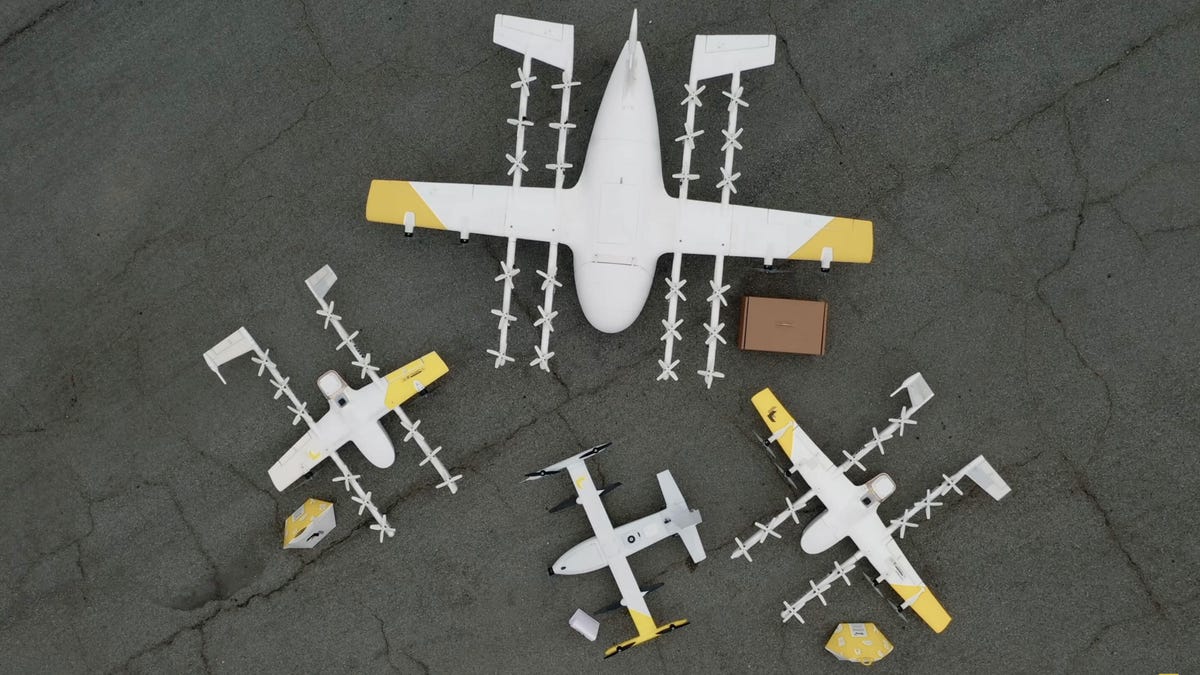Alphabet's Wing Unveils XXL and XXS Drones for More Delivery Options
Tiny drones are good for delivering prescription drugs, and larger ones are designed for packages up to 7 pounds.

Alphabet's Wing division has designed big and little variations (top and bottom) to its standard Hummingbird model (left and right).
Wing, the drone delivery division of Google's parent company Alphabet, on Thursday unveiled a "library" of different aircraft designs tailored for larger and smaller loads than its original Hummingbird model.
Hummingbird models can carry bags weighing up to about 2.5 pounds and have made hundreds of thousands of deliveries so far. A beefier sibling, though, gets a bulbous body and more propellers for lift, for payloads more than twice that heavy. Another tiny drone is tailored for tiny packages of prescription drugs.
All the aircraft, though, have the same basic design: some propellers to lift vertically, others to propel the aircraft forward, and fixed wings to increase lift and efficiency while in flight. Wing is working on a modular approach for its library, recycling ideas and components that have been proven in its tests, said Adam Woodworth, who was promoted to Wing chief executive from chief technology officer in February.
Using these tested sets of flight control systems, propulsion hardware and materials lets Wing rapidly develop new variations "and tailor them to a broad range of uses from delivery of food, medicine and other goods, to supply chain optimization and emergency response," Woodworth said.
Wing is working on bigger and smaller drones. An effort to more than double standard payload weight to 6 or 7 pounds yielded this bulbous design.
Drone delivery, although still nascent and limited by regulatory constraints, is gradually catching on. Wing began deliveries in some suburbs of Dallas-Fort Worth earlier this year, an expansion from major operations in Australia. Competitor Amazon Prime Air plans to test drone deliveries south of Sacramento, California. In parts of North Carolina, Flytrex drones deliver food from Just Wings, Chili's Grill & Bar and Maggiano's Little Italy to homes.
And on Thursday, Zipline announced a plan for drone delivery of medical products to areas near Tacoma, Washington. It already has major operations in Rwanda and Ghana.

